Venus is a strange planet. Not only does Venus spin backwards, but its proximity to Earth means it captured the imagination of very early astronomers, some of whom wondered whether our planetary neighbour might also harbour life.
Since astronomers first noticed the thick clouds swirling above Venus, they have wondered whether life-filled rainforests or even an advanced alien civilisation could be hidden beneath them.
On Earth, clouds mean rain, so the assumption was that Venus was a wet world rich in vegetation. As Venus was also the closest planet to Earth and the most similar to it in terms of size, it also seemed most likely to resemble Earth on the surface.
Over the centuries astronomers and scientists turned their telescopes, then their robotic spacecraft, towards Venus in an attempt to find out more about this intriguing planet, and whether it could support life.
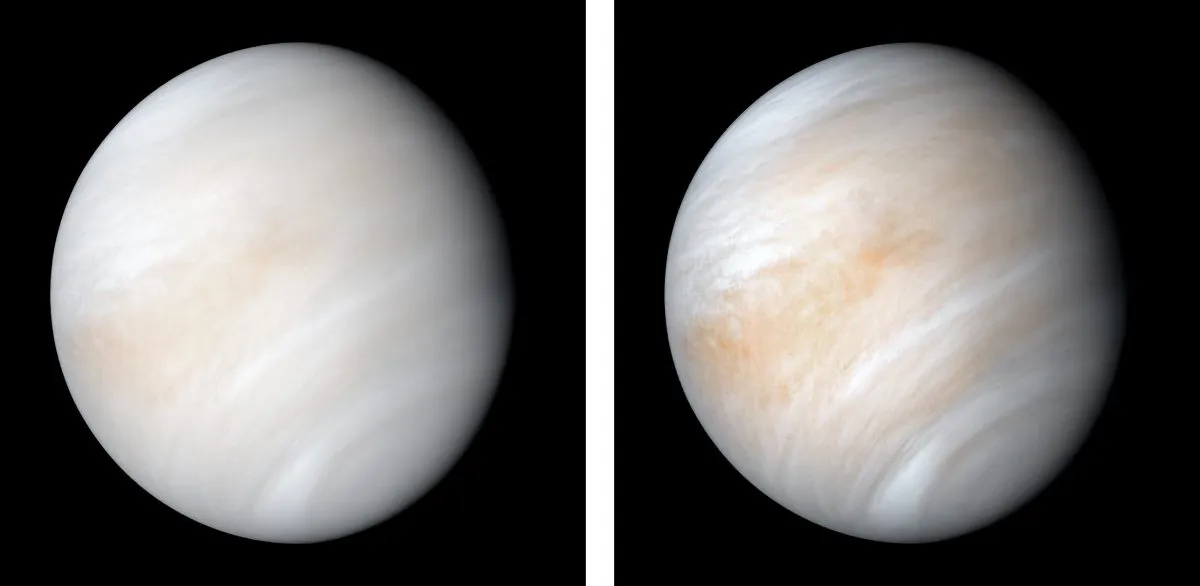
Searching for life on Venus
But it wasn’t just science fiction authors who were imagining alien life thriving beneath Venus’s clouds.In 1947 Soviet scientist Gavriil Adrianovich Tikhov became the first ‘astrobotanist’ when he set up a department at the Alma Ata Observatory in Kazakhstan to study the plants he felt certain were growing on both Mars and Venus.
Tikhov carefully observed the planet and its climate and predicted its temperature would be 60-76ºC: hot, certainly, but still cool enough to allow for liquid oceans on the surface.
At the same time he was exploring planet Earth, searching the most extreme environments to see how different organisms survived under seemingly inhospitable conditions.
From the frozen Arctic to boiling geysers, Tikhov found life. If bacteria could survive under the boiling temperatures of a geyser, surely they could survive the scalding seas of Venus?

Venus's hellish environment
The dream of lush Venusian rainforests wasn’t to last though.By the 1960s both remote planetary astronomy and space exploration were becoming more developed, and revealed that Venus was hotter than any previous estimate.
It was much hotter. Perhaps even as high as 300ºC. All hopes of finding oceans and alien civilisations evaporated.
When the Soviet Venera probes arrived throughout the 60s and 70s, they revealed that the planet was far more inhospitable than anyone had imagined.
Temperatures reached 470ºC, the pressure was 92 times that of Earth and the clouds that had shrouded the planet in mystery were now known to be made of sulphuric acid.
It seemed that the hope of finding life on Venus was doomed. On the surface, at least.
Human exploration of Venus
In recent years, planetary exploration has come to focus very much on Mars, but this hasn’t always been the case. In the early days of the Space Age, Venus was seen as just as desirable a planetary target, but as NASA was busy exploring the Moon, it fell to the Soviet Union to set off for Venus.
Between 1961 and 1985 the Soviets launched dozens of missions to Venus as part of the Venera campaign. While a few failed, the majority made it to the planet, making Venera one of the Space Race’s most successful projects.

The first spacecraft to reach Venus’s atmosphere
The first Venera missions launched in 1961 at the height of the Space Race, when publicity was everything. While the first flyby of another planet would capture some headlines, the first landing on another planet would get many more and so the mission was designed to be a lander.
The first attempt, Venera 1, was an impactor, meaning it would purposefully crash into the planet while taking and transmitting measurements of the atmosphere right up until the last second.
A fault meant Venera 1 ended up missing the planet entirely, so the Soviets redesigned the probe to drop a lander that would take advantage of Venus’s thick atmosphere, using a parachute to descend to the surface.
On 18 October 1967, Venera 4 successfully released its lander into the atmosphere of Venus, giving humanity our first look at the air above another planet.
The instruments initially revealed a carbon dioxide rich atmosphere with a temperature similar to that of Earth. But as the space craft fell, the temperature rose and with it, the pressure.
Venera 4's last measurement put the temperature at a searing 271ºC and the pressure a crushing 22 times that of sea-level on Earth, before it abruptly stopped working 20km above the surface. Chances were it would be even worse closer to the surface.
While it was probably pressure that killed Venera 4, it was temperature that most worried engineers: not for the probe itself, but that it would melt through the cables holding the parachute, dropping the probes while they were still several kilometres up.
Venera 5 and 6 were already being built, but the probe and parachute were reinforced to survive at least a little longer. When they reached the planet in January 1969 they lasted 53 and 50 minutes respectively before expiring.
As feared, they revealed that pressure lower down in the atmosphere could be as high as 100 atmospheres.
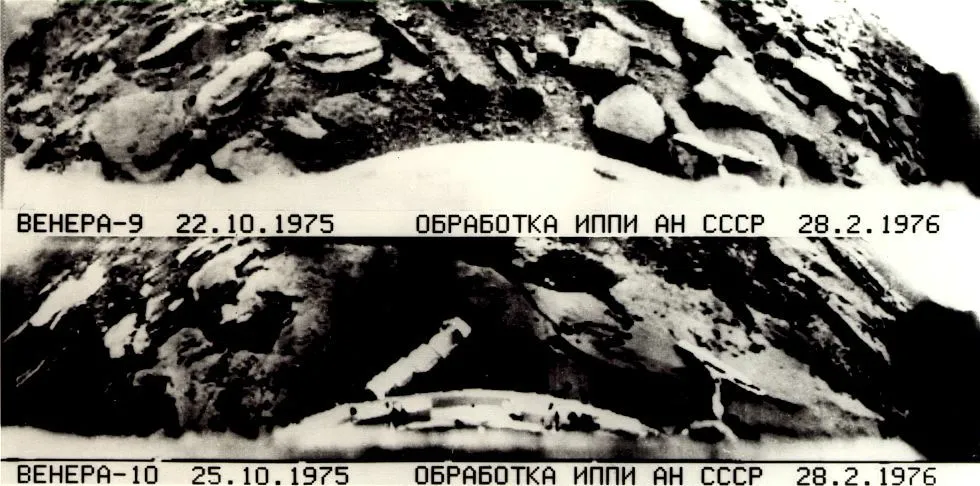
Building a better Venus probe
If the Soviets wanted to touch down on Venus, Venera needed a complete redesign and so they drafted in the experts at surviving under pressure: submarine engineers.
The resulting recommendations required machining titanium - a metal that had only recently become workable and which no one on the Venera team had used before - into a perfect sphere.
The team rose to the challenge and built a lander capable of enduring pressures of 180 atmospheres and temperatures of 540ºC.
Finally, Venera 7 touched down on the surface of Venus on 15 December 1970, but it was tipped over on its side.Despite this, the spacecraft measured the surface pressure at an astonishing 92 atmospheres with a temperature of 474ºC.
19 months later, when the next launch window to Venus rolled around, Venera 8 succeeded in taking the first pictures from the surface of another world.
For the next few Venera probes, the Soviets were more concerned with exploring the surface, but they did still continue to measure the atmosphere throughout the descent.
They found the planet’s atmosphere was 96% carbon dioxide and 3% nitrogen, sprinkled with a toxic mixture of sulphur and chlorine compounds and featuring acid clouds so thick that they blocked out 95% of the Sun’s light.
To see whether the planet was stormy as well as dark, Venera 11 and 12 carried microphones with them to listen out for the roll of distant thunder.
Venera 11’s light sensor measured 30 lightning strikes in a single second, while Venera 12 picked up one thunderclap that rumbled on for 15 minutes and was so loud the spacecraft had been able to hear it from the other side of the planet.
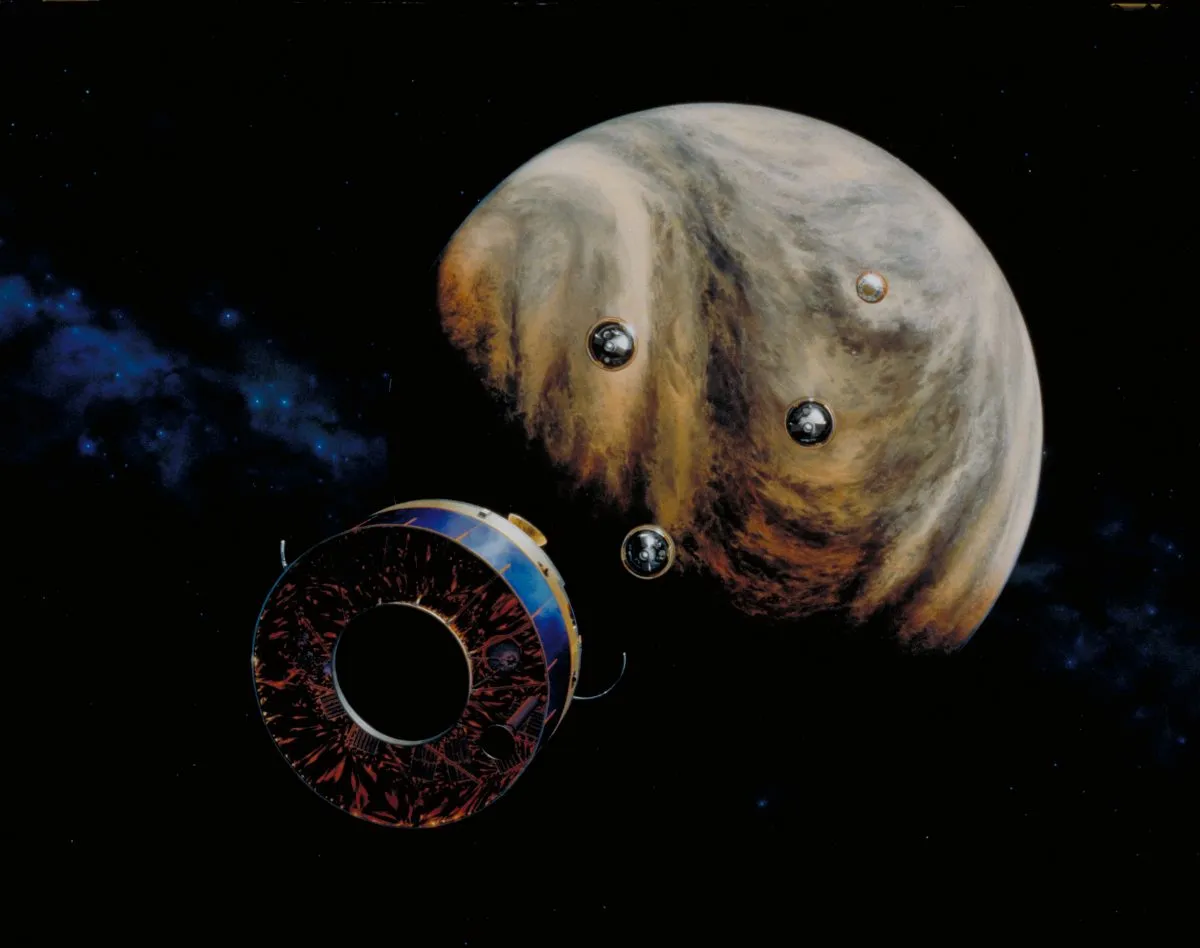
NASA's Venus exploration
About this time, NASA was finally turning its attention to the clouded planet with its Pioneer Venus Multiprobe, which also arrived in 1978.
The spacecraft had one large probe as well as three smaller ones, all of which were intended to examine the planet’s atmosphere.
Two of the small probes were dropped onto different points on the day side of the planet, while one more was dropped onto the night.
As a Venus night lasts for almost 300 Earth days, astronomers had wondered if the climate might be very different, but the night side probe found very little difference from the day suggesting a lively wind system mixing the hot air of the day side with the cool of the night.
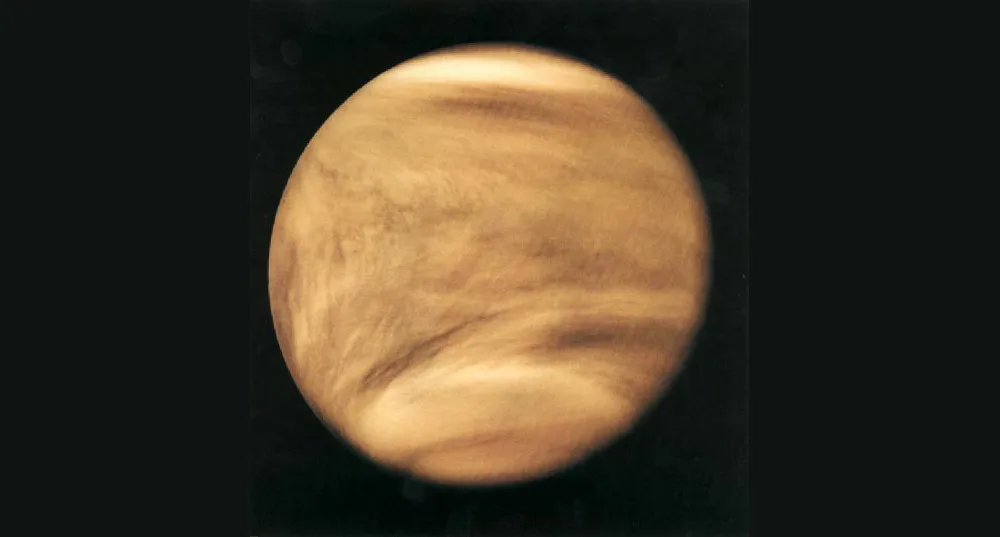
Exploring Venus by balloon
In 1982 Venera 13 took the first colour images from the surface of Venus, but it was becoming abundantly clear the surface was just too difficult to explore and so attention returned to the planet’s atmosphere.
While chatting with Soviet scientists at a cocktail party in the late 1970s, French space pioneer Jacques Blamont realised that in 1985 it would be possible to drop a probe at Venus, then continue on to meet upcoming visitor to the inner Solar System, Halley’s Comet.
However, it wasn’t a lander Blamont had in mind, but a balloon.
What started as a scenario discussed over drinks eventually became the Vega missions, an international effort led by the Soviet Union with the help of over a dozen other countries.
The two Vega missions dropped into the planet’s night side in June 1985, inflated their 3.5m-wide balloons and began their mission floating through the atmosphere 54km above the surface.
Unfortunately, this turned out to be one of the most turbulent layers of Venus’s atmosphere.Winds of 240km/h buffeted the balloons to and fro, while air pockets would cause the balloons to plummet 2km at a time.
Both Vegas lasted two days before their batteries died. Eventually, the balloons would have floated around to the day side, where the Sun’s heat would cause them to expand and burst.

Returning to Venus
The Vegas marked the end of the golden age of Venus exploration, at least until recently.As technology has improved and more players have entered the space age, people are beginning to return their gaze to Venus.
In November 2005 the European Space Agency launched Venus Express, its first spacecraft sent to study the planet. Its purpose was to study Venus's surface and atmosphere, examining interactions between the two.
The Indian Space Research Organisation is currently developing an atmospheric balloon, Shukrayaan-1, while the Russian space agency and NASA are joining forces on a proposed joint mission to the surface.
With the news of potential biomarkers in the clouds above Venus suddenly shining a light back on the planet, we could be about to see a lot more future mission plans aiming to explore the skies of our nearest planet neighbour.
There is even talk of developing a special kind of rover that could withstand the extreme conditions on Venus.

Life in the clouds of Venus?
The search for life on Venus has turned to the clouds above the planet’s surface. Earth’s clouds are known to be teeming with life in the form of bacteria, fungal spores and algae, so it isn’t inconceivable that Venus’s might as well.
However, the water clouds of Earth are much more hospitable than the toxic, poisonous, corrosive clouds above Venus.Could Venusian bacteria survive under such conditions?Maybe.
Bacteria have been found living in volcanic lakes made of almost pure sulphuric acid, so it’s possible that something could evolve to survive in a seemingly unliveable environment. Or could it be delivered via the process known as panspermia?
One key ingredient the clouds have is water, albeit in levels 10,000 times lower than Earth’s atmosphere. It’s also possible that volcanic processes on the planet’s surface (past or perhaps even present) could supply nutrients for microscopic life.
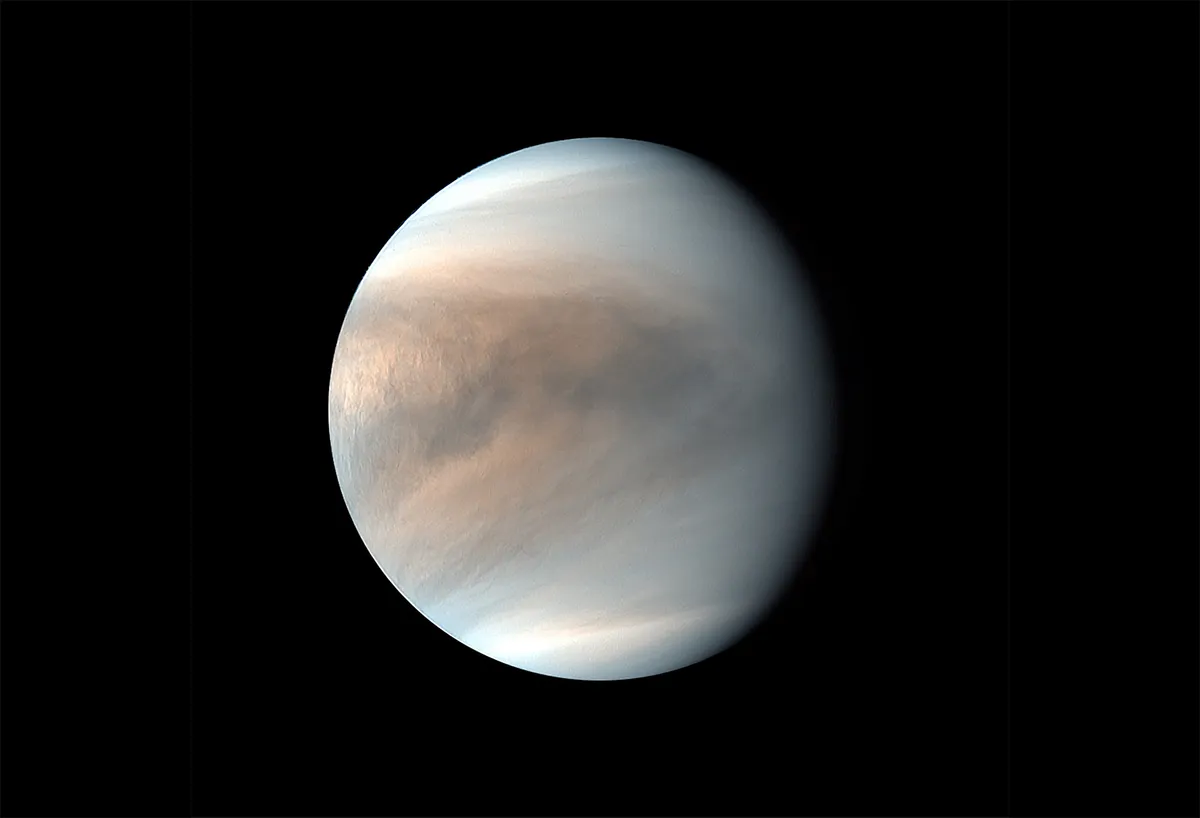
Is there any evidence for life on Venus?
Venus’s toxic atmosphere has long been discounted as a potential spot for finding life, but two recent advancements have made the idea seem far more credible.
In 2019, astronomers looking at the planet in ultraviolet discovered dark patches appearing in the clouds.While there are competing theories as to their cause, one suggestion is that they’re caused by microorganisms growing in the atmosphere, akin to an algae bloom in Earth’s oceans.
Then in 2020, astronomers announced they had found a potential biomarker, phosphine, in Venus's atmosphere. On Earth this chemical is only readily produced naturally by bacteria which thrive in oxygen-free environments: exactly the kind of environments you find in the clouds above Venus.
Will we see confirmation of life outside of Earth in our lifetimes? Who knows, but currently Venus is looking like a very promising place to continue the search.
Ezzy Pearson is BBC Sky at Night Magazine's News Editor.
